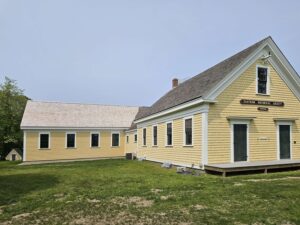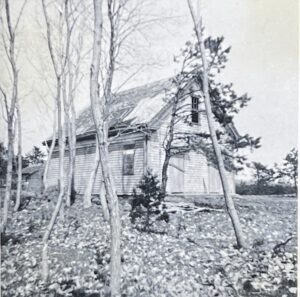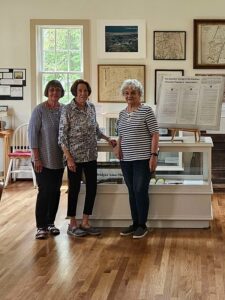EASTHAM — With a new wing added over the winter, this town’s old yellow schoolhouse, which now serves as its museum, run by the local historical society, has been restored to its former glory. Or maybe even beyond that — if not in size, in the way of gleaming wood floors, high ceilings, and sunny windows.

Maps of the town cover the addition’s western wall, including one displaying archaic names for Eastham and Orleans landmarks, including “Stinking Hummock,” “Big Aunt Rachel’s Cove,” and “Lucy’s Crotch.” Curator Marca Daley says the space will be used for exhibits, but the centerpiece now is a case of artifacts from the schoolhouse building’s time as a volunteer fire station in the 1940s. A shelf along the north wall holds a line of gloves and balls from the town’s farm league baseball team, captained by Harry Snow. These are items visitors are encouraged to touch, Daley says.
The museum’s new wing is part of a building that’s been through many changes since the town’s original schoolhouse was inaugurated here in 1869.
The schoolhouse was just one room then, but there were two other identical school buildings in Eastham at the time. One was on Hay Road, and the other was behind the present Friendly Fisherman restaurant, according to Mary Brevard, a historical society member who has been researching the building’s past in preparation for a series of presentations to be offered at the museum later this summer.
When the school district was consolidated in the early 20th century, the two other school buildings were moved, one in 1908 and the other in 1909, and attached to the original structure at 25 Schoolhouse Road.
The expansion reconstructs the second of two wings that were still part of the schoolhouse’s footprint in 1937 — that’s the year the town’s grade school students picked up their books and, led by classmates in the drum and bugle corps, marched down the street to the new Eastham Elementary School.

The historical society’s vision was to rebuild both wings, but the projects were expensive and so were taken on one at a time. The first wing was rebuilt in 2007. It was designed by local architect Peter McDonald, who also assisted in creating preliminary drawings for this latest addition back in 2016.
When the present Eastham Elementary School became operational in 1937, the triple schoolhouse building was sold to a private buyer who removed the two wings. Brevard says that one was scrapped for lumber; the other moved down the street and became part of another house.
In 1945, the remaining building — the original schoolhouse — was deeded to Eastham’s Volunteer Firemen’s Association. Daley says that the firefighters’ involvement with the schoolhouse building is well recorded, thanks to the monthly letters that association members wrote to Eastham’s servicemen during World War II.
The volunteer firefighters raised money to buy the building through whist parties. They used it until the early 1950s, when the town’s first firehouse, a small brick building that is now the town’s health office, was completed.
The building then fell into disrepair until the Eastham Historical Society bought it in 1965 and turned it into the historical museum it is today. “It was just a derelict building in the woods” when the society bought it, Brevard says. In 2001, the museum was listed on the national and Massachusetts registries of historic places. The next year, the historical society began planning for an addition to the overcrowded building.
“I remember coming in and seeing the archives piled up to the rafters,” says Eileen Seaboldt, who is now president of the Eastham Historical Society. “You would walk through and wonder what was going to fall down.”

Construction on the new wing began last October, a few months after town meeting approved an appropriation of $447,200 in Community Preservation Act funds for the purpose. The measure also authorized the select board to acquire a historic preservation restriction on the property. According to the state’s Cultural Resource Inventory, which catalogues restrictions placed on historic buildings throughout Massachusetts, that hasn’t happened yet.
The historical society’s project had in the fall of 2022 received a boost in the form of $100,000 from an anonymous donor. And when historical society treasurer and select board chair Art Autorino died in 2024, the society received a $20,000 donation in his memory.
Members of the historical society are still making plans for ways to use the new space. “We toured the Wellfleet Historical Society and the Truro museum, and those gave us ideas,” Brevard says. “We want to have a big wall mural and a genealogy corner.” To create those new exhibits, though, Brevard says they’ll need to raise more money.
She is optimistic. “Raising money to save this building was one of the first things the historical society did,” says Brevard. “We’re still working.”



